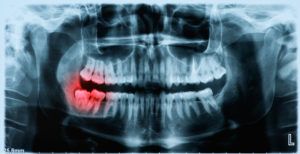Your Dentist Goes In-Depth to Explain Root Canal Therapy
October 18, 2018
 More than likely, you’ve heard the term ‘root canal,’ but do you know what the procedure entails? You may have even heard horror stories about the treatment process, but there’s nothing like receiving detailed information from an expert. As you read on, your dentist provides valuable information about root canal therapy so you can be comfortable about the entire restoration process.
More than likely, you’ve heard the term ‘root canal,’ but do you know what the procedure entails? You may have even heard horror stories about the treatment process, but there’s nothing like receiving detailed information from an expert. As you read on, your dentist provides valuable information about root canal therapy so you can be comfortable about the entire restoration process.
Why Do I Need a Root Canal?
The root canal procedure is used to restore a badly broken or decayed tooth. One of the common symptoms of someone who is in need of this type of therapy is to have bouts of sharp pain and maybe even a toothache.
Understanding the Anatomy of the Tooth
Just to get a better understanding of what root canal therapy entails, let’s peer into your tooth’s anatomy:
- The Enamel – This is the hard, outer surface of your teeth that protect them from the harsh environment inside your mouth. Over time, it can be worn down by acids produced from your stomach and the foods and drinks you consume.
- Dentin – This portion of the tooth lies beneath the enamel and is the part where nerves first appear. Thus, it is also the first area to send pain sensations.
- The Pulp – The next layer is the pulp, which is the epicenter of the tooth and contains the nerves and canals. When this area has been infiltrated with bacteria, a root canal is required to restore the tooth.
How Root Canal Therapy Works
Here are the steps to the root canal procedure:
- X-Rays – Before any work is done, your dentist will capture X-Ray images of your mouth to locate the infection.
- Numbing – Many people worry about the pain of a root canal, but with the aid of numbing medication that is applied first, patients are able to experience a painless treatment process.
- Pulpectomy – The process begins with your dentist making an incision in the tooth to expose the infected area. Then the decayed tissue is cleared away and the area thoroughly cleaned.
- Filling – A compound called gutta-percha is then added to fill the space and the tooth is sealed with dental cement.
Once the procedure is done and the numbing medication wears off, you may experience slight discomfort, but an over-the-counter pain reliever like ibuprofen will usually suffice. Patients are happy to find out that any discomfort from the root canal procedure is no worse than that of receiving a dental filling.
If you’re experiencing tooth pain and suspect you have severe decay, it’s important to visit your dentist to be examined. The possibility of having a root canal performed depends on there remaining enough healthy material to salvage the tooth. Thus, the longer you wait to be seen, the more the infection will continue to travel.
So to be fully restored today, contact your dentist to schedule an appointment.
About the Author
A veteran of the United States Military, Dr. Darrick Castleberry is known as “painless” among his fellow Marines because of his pain-free approach to treating dental conditions of all types. He earned his dental degree from the Meharry Medical College School of Dentistry and has remained steadfast in his efforts to both serve his country and provide patients with the absolute best in dental care. Dr. Castleberry restores damaged teeth with root canal therapy at the Castleberry Center in Louetta, TX, and he can be reached for more information through his website.
No Comments »
No comments yet.
RSS feed for comments on this post.
